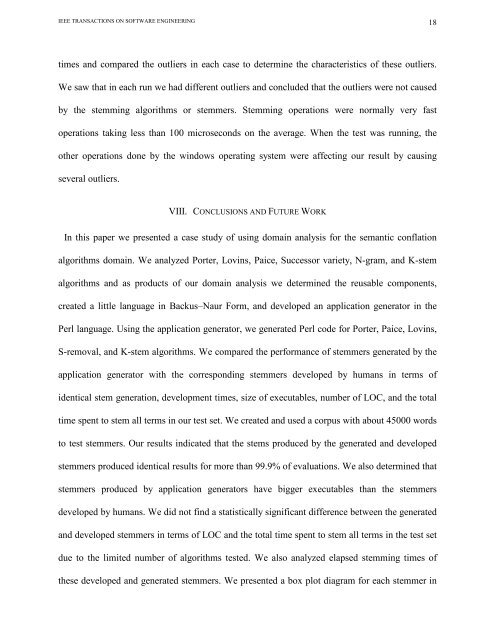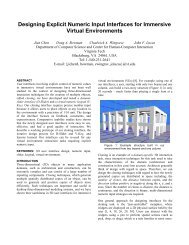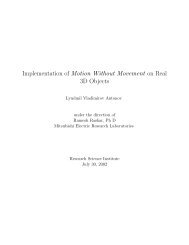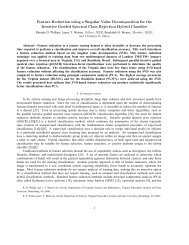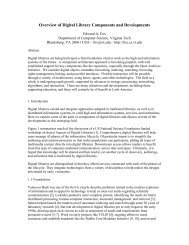A Case Study of Using Domain - Computer Science Technical ...
A Case Study of Using Domain - Computer Science Technical ...
A Case Study of Using Domain - Computer Science Technical ...
Create successful ePaper yourself
Turn your PDF publications into a flip-book with our unique Google optimized e-Paper software.
IEEE TRANSACTIONS ON SOFTWARE ENGINEERING<br />
times and compared the outliers in each case to determine the characteristics <strong>of</strong> these outliers.<br />
We saw that in each run we had different outliers and concluded that the outliers were not caused<br />
by the stemming algorithms or stemmers. Stemming operations were normally very fast<br />
operations taking less than 100 microseconds on the average. When the test was running, the<br />
other operations done by the windows operating system were affecting our result by causing<br />
several outliers.<br />
VIII. CONCLUSIONS AND FUTURE WORK<br />
In this paper we presented a case study <strong>of</strong> using domain analysis for the semantic conflation<br />
algorithms domain. We analyzed Porter, Lovins, Paice, Successor variety, N-gram, and K-stem<br />
algorithms and as products <strong>of</strong> our domain analysis we determined the reusable components,<br />
created a little language in Backus–Naur Form, and developed an application generator in the<br />
Perl language. <strong>Using</strong> the application generator, we generated Perl code for Porter, Paice, Lovins,<br />
S-removal, and K-stem algorithms. We compared the performance <strong>of</strong> stemmers generated by the<br />
application generator with the corresponding stemmers developed by humans in terms <strong>of</strong><br />
identical stem generation, development times, size <strong>of</strong> executables, number <strong>of</strong> LOC, and the total<br />
time spent to stem all terms in our test set. We created and used a corpus with about 45000 words<br />
to test stemmers. Our results indicated that the stems produced by the generated and developed<br />
stemmers produced identical results for more than 99.9% <strong>of</strong> evaluations. We also determined that<br />
stemmers produced by application generators have bigger executables than the stemmers<br />
developed by humans. We did not find a statistically significant difference between the generated<br />
and developed stemmers in terms <strong>of</strong> LOC and the total time spent to stem all terms in the test set<br />
due to the limited number <strong>of</strong> algorithms tested. We also analyzed elapsed stemming times <strong>of</strong><br />
these developed and generated stemmers. We presented a box plot diagram for each stemmer in<br />
18


